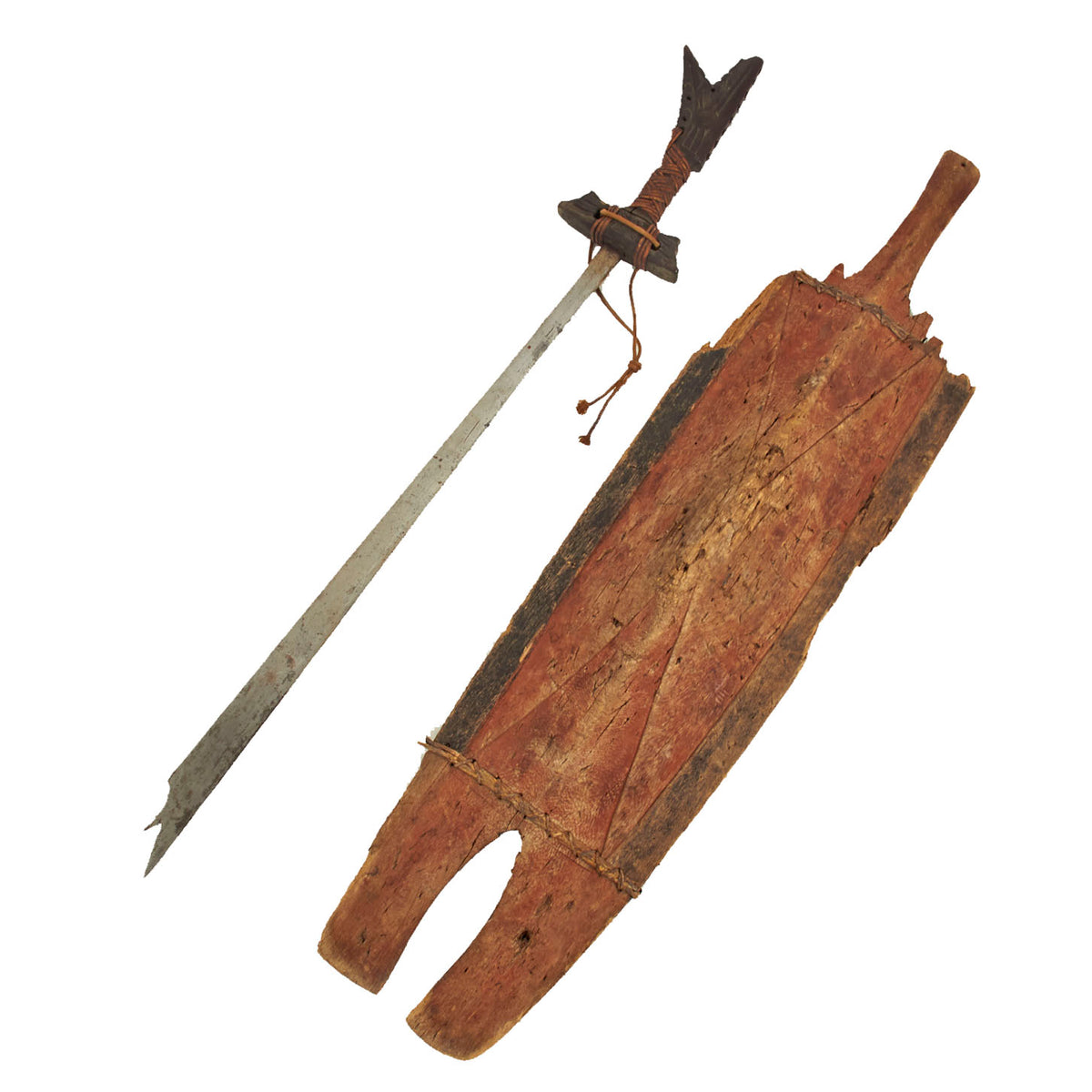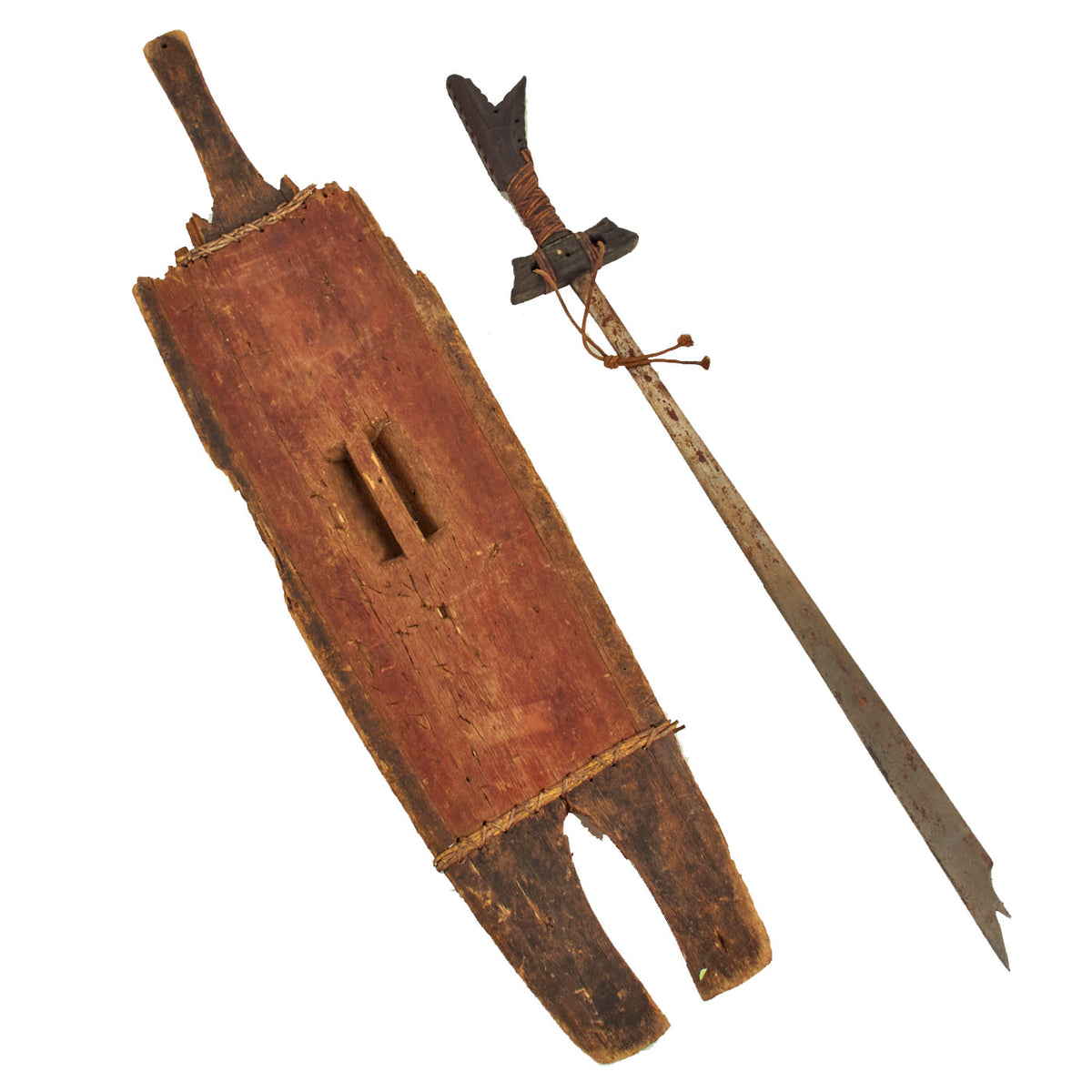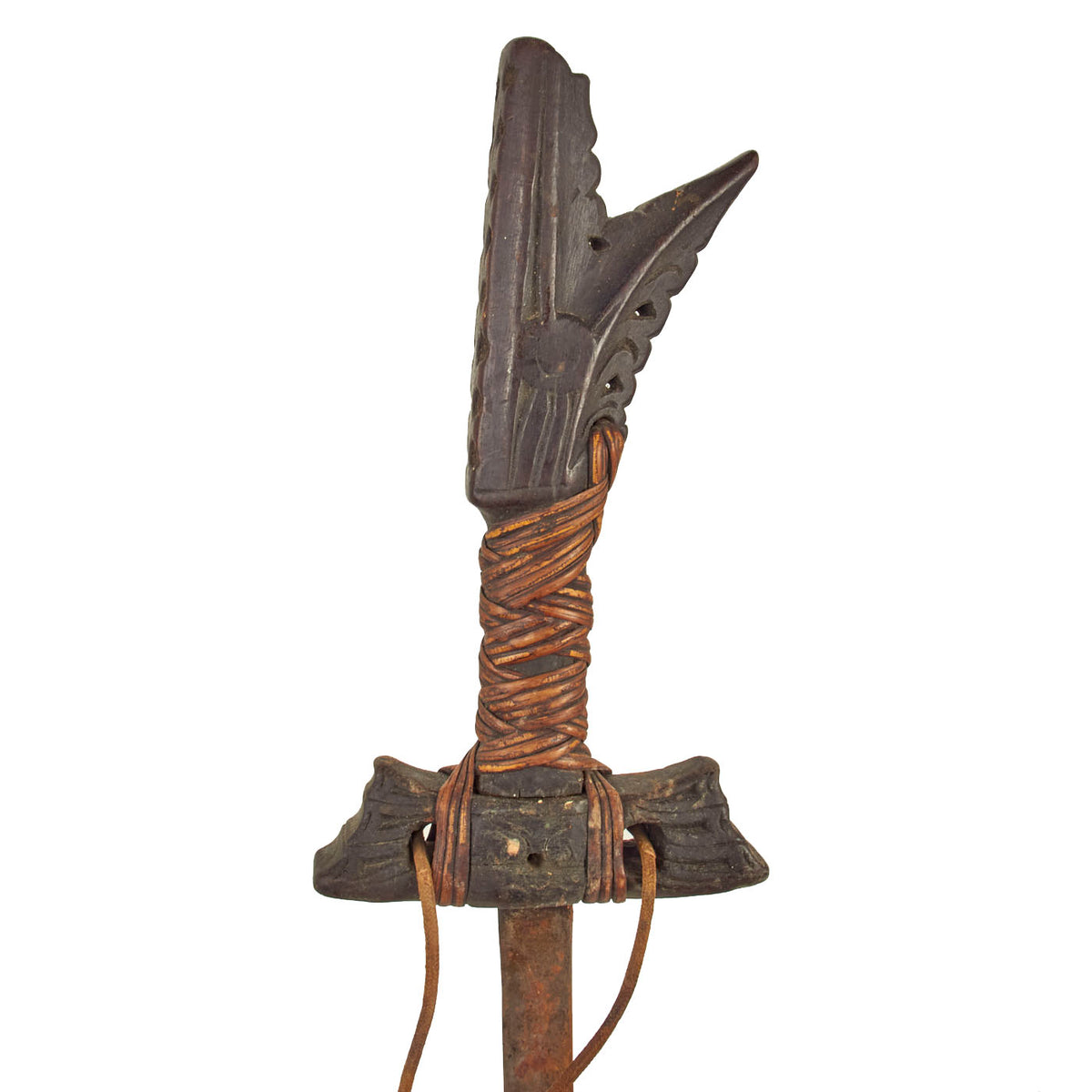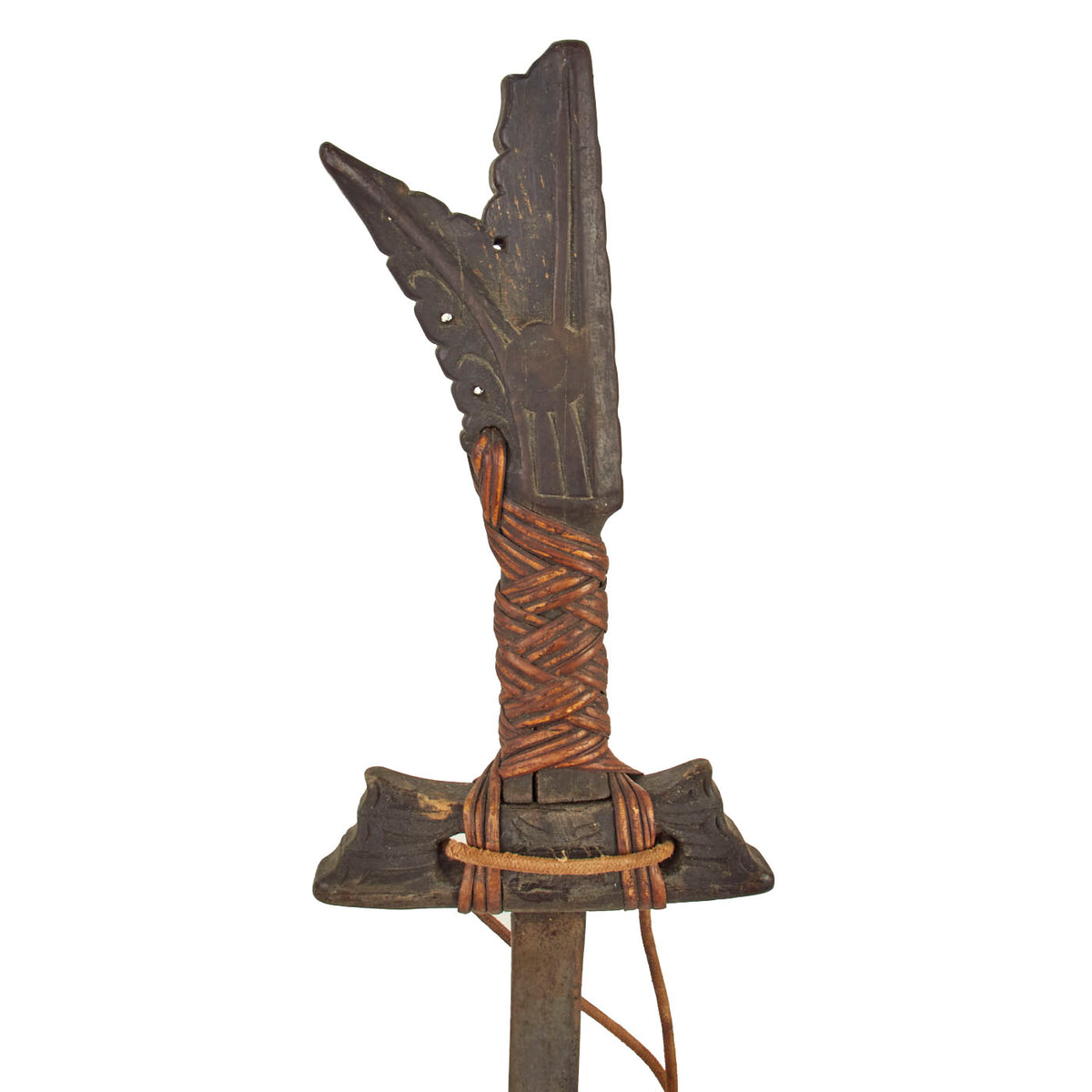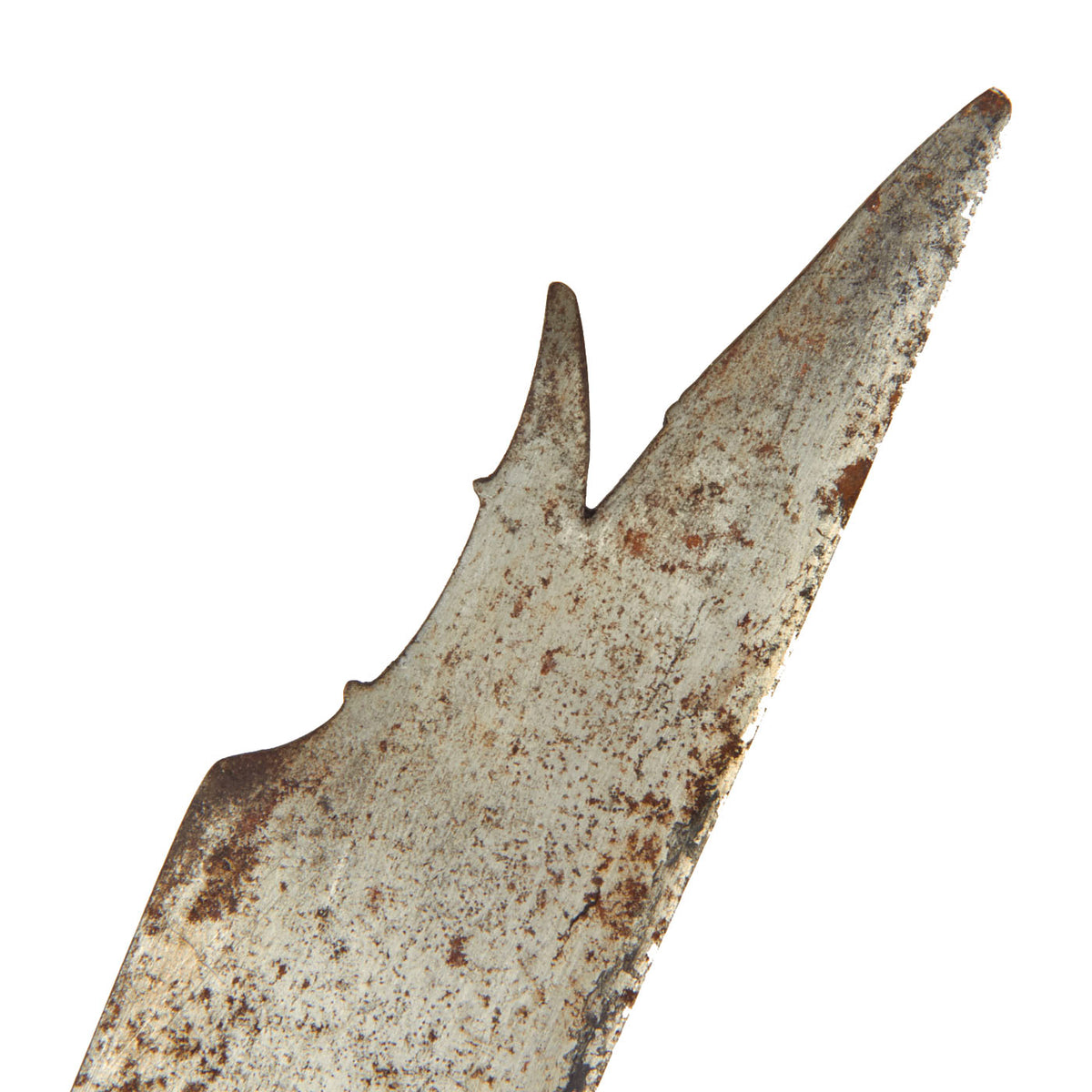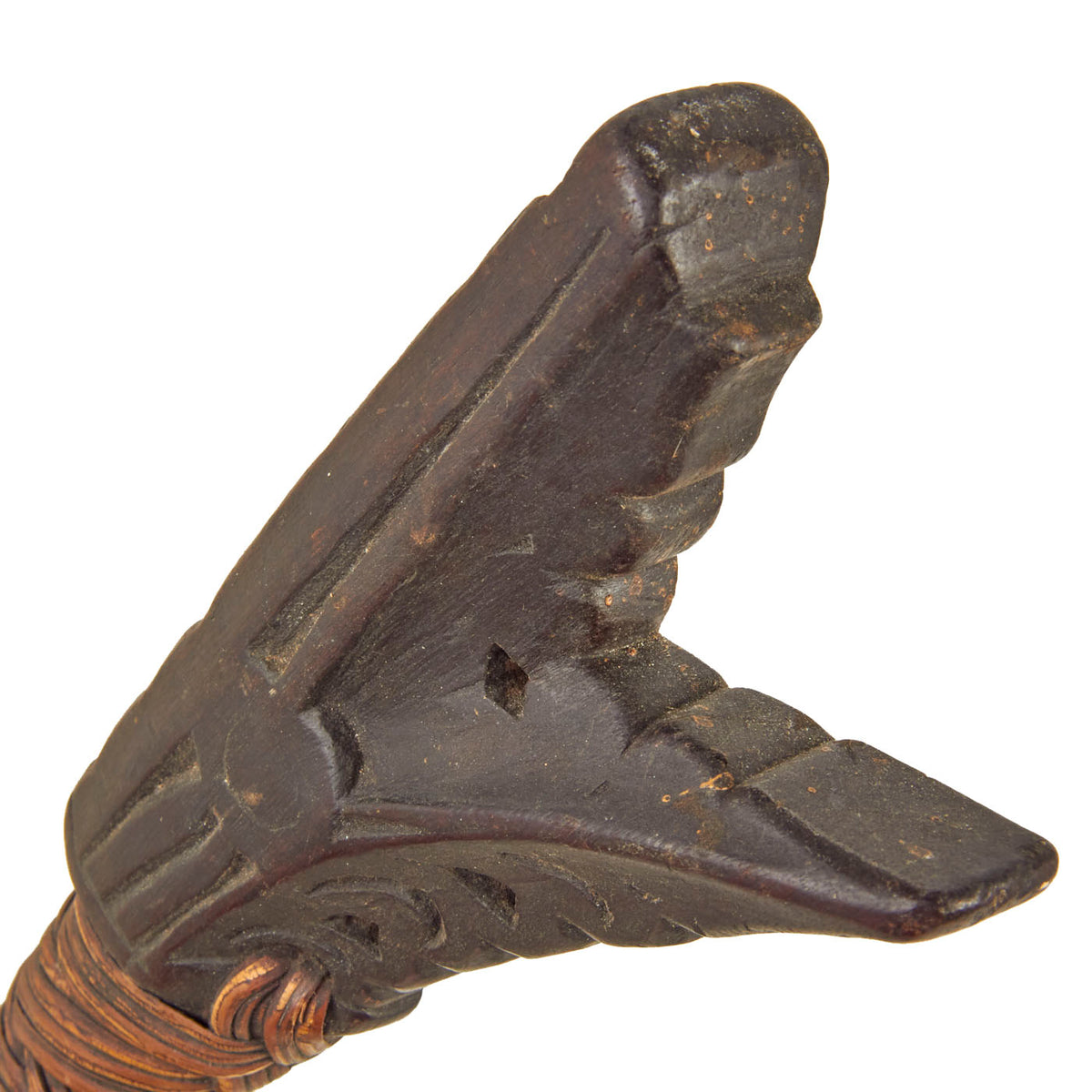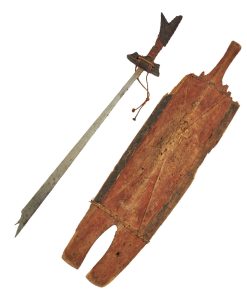Original Borneo Late 19th / Early 20th Century Dayak Headhunters Mandau & Shield Original Items
$ 195,00 $ 78,00
Original Items: Only One Set Available. Mandau[1] is the traditional weapon of the Dayak people of Borneo.[2][3] It is also known as Parang Ilang among the Bidayuh, Iban and Penan people, Malat by the Kayan people or Baieng by the Kenyah people or Bandau by Lun Bawang or Pelepet/Felepet by Lundayeh. Mandau is mostly ceremonial. However, a less elaborate version called Ambang is used as an everyday practical tool.
Associated with the Headhunting Ceremony, where people would gather to attack other tribes, and gather heads to be used in various festivities, Mandau is both a work of art in itself and a weapon.
Characteristics for the Mandau is that the blade is shaped convexly on one side and somewhat concavely on the other side. The blade is mostly made of tempered metals, with exquisite vine-works and inlaid brass. The hilt is made from animal horns, such as deer’s horns, although some variations with human bones and fragrant wood also have been found. Both the hilt and scabbard are elaborately carved and plumed. Details of carvings vary from tribe to tribe, but mostly depict creatures or, if human bones were used, anthropomorphic deities. A Mandau is often accompanied with a whittling knife, generally referred to as Pisau raut. This example appears to be made of carved wood and not bone. There is no scabbard present with this example.
Ambang is a term used for Mandau that is made from common steel. Often it is also made as souvenir. For the untrained eye and those who are not familiar with the Mandau, will not be able to distinguish the difference between a Mandau and an Ambang because of the outlook appearance that looks almost similar. However the two are actually very different. If one examines in detail, the differences are very obvious that the engravings can be found on the blade and it is embedded with gold, copper or silver. The Mandau holds a stronger edge and with flexibility, as it is said that the Mandau is made from iron ore obtained from rocky mountains forged by skilled blacksmiths. Whereas the Ambang is made from ordinary steel.
We believe that this example is Mandau and not the souvenir Ambang, as this blade has the proper flex and bend seen with Mandau.
The shield is a traditional Dayak shield but has a slit in the top portion. There are many nicks, cracks and scratches present, all signs of faithful use. The lower portion appears to have broken off long ago.
This is truly a wonderful, yet morbid pair of items from the famous headhunters of Borneo. Comes more than ready for display!
Headhunting
Headhunting is the practice of hunting a human and collecting the severed head after killing the victim, although sometimes more portable body parts (such as ear, nose or scalp) are taken instead as trophies. Headhunting was practiced in historic times in parts of Europe, East Asia, Oceania, Southeast Asia, South Asia, Mesoamerica, West and Central Africa.
The headhunting practice has been the subject of intense study within the anthropological community, where scholars try to assess and interpret its social roles, functions, and motivations. Anthropological writings explore themes in headhunting that include mortification of the rival, ritual violence, cosmological balance, the display of manhood, cannibalism, dominance over the body and soul of his enemies in life and afterlife, as a trophy and proof of killing (achievement in hunting), show of greatness, prestige by taking on a rival’s spirit and power, and as a means of securing the services of the victim as a slave in the afterlife.
Today’s scholars generally agree that headhunting’s primary function was ritual and ceremonial. It was part of the process of structuring, reinforcing, and defending hierarchical relationships between communities and individuals. Some experts theorize that the practice stemmed from the belief that the head contained “soul matter” or life force, which could be harnessed through its capture.
Fast Shipping with Professional Packaging
Thanks to our longstanding association with UPS FedEx DHL, and other major international carriers, we are able to provide a range of shipping options. Our warehouse staff is expertly trained and will wrap your products according to our exact and precise specifications. Prior to shipping, your goods will be thoroughly examined and securely secured. We ship to thousands clients each day across multiple countries. This shows how we're dedicated to be the largest retailer on the internet. Warehouses and distribution centres can be located throughout Europe as well as the USA.
Note: Orders with more than one item will be assigned a processing date depending on the item.
Before shipping before shipping, we'll conduct a thorough inspection of the items you have ordered. Today, the majority of orders will be delivered within 48 hours. The delivery time will be between 3-7 days.
Returns
The stock is dynamic and we cannot completely manage it because multiple stakeholders are involved, including our factory and warehouse. So the actual stock may alter at any time. It's possible that you may not receive your order once the order has been made.
Our policy is valid for a period of 30 days. If you don't receive the product within 30 days, we are not able to issue a refund or an exchange.
You can only return an item if it is unused and in the same state as the day you received it. You must have the item in its original packaging.
Related products
Uncategorized
Armored Burgonet Helmet & Polearm from Scottish Castle Leith Hall Circa 1700 Original Items
Uncategorized
Uncategorized
Uncategorized
Uncategorized
Uncategorized
Uncategorized
Uncategorized
Uncategorized
Uncategorized
Uncategorized
Angolan Rebel 1970s era 60mm Inert Display Mortar from Angolan Civil War Original Items
Uncategorized
Armoured Fighting Vehicles of the World: AFVs of World War One (Hardcover Book) New Made Items
Uncategorized
Uncategorized
Uncategorized
Uncategorized
Uncategorized
Uncategorized
Uncategorized
